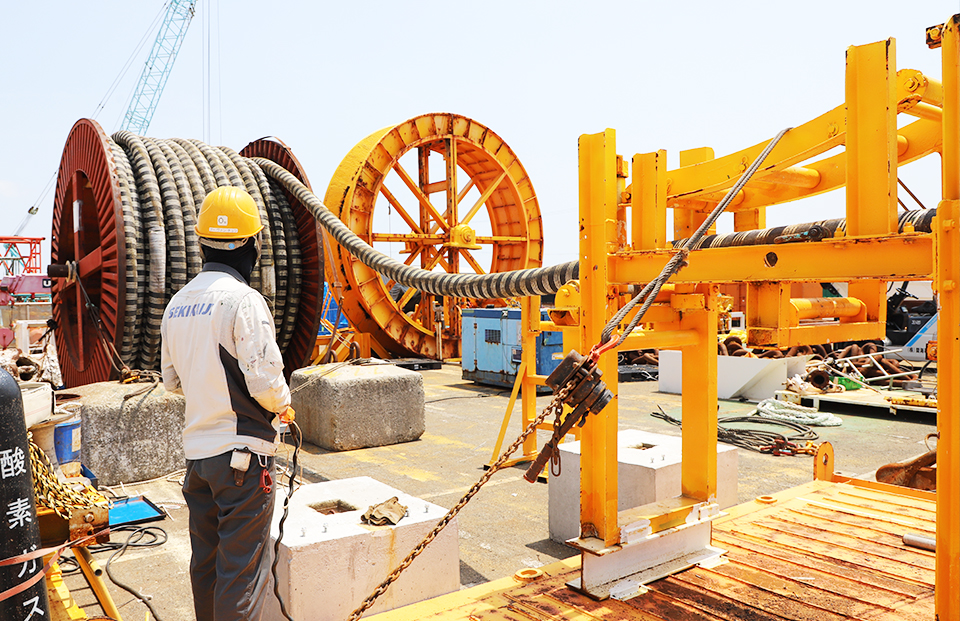
Our Services
Submarine Cable Operations
Outstanding technology, solid track record, and cutting-edge facilities.
Supporting submarine cables that connect to Japan’s future.
Submarine cable operations are not only about new laying and burying. They also include investigation and repair of damages caused by aging or natural disasters and removal. SEKIKAIJI Industry undertakes protective construction to extend the lifespan. We own the state-of-the-art cable-laying barges “Awaji” and “Asahi,” which serve as mother ships for various submarine operations. Both barges are equipped with the Dynamic Positioning System (DPS) for stationary positioning, which automatically controls the barges by calculating GPS positioning information and external factors (currents, waves, and wind). They maintain accurate barge position and stillness, laying cables along the computer input route. Without the need for repeated anchor deployment and retrieval or movement, we achieve safer, faster, and more efficient work, even in deep waters or busy maritime areas like the Akashi Strait or Tokyo Bay.
We have introduced remotely operated vehicles (ROVs) for diving operations that previously relied heavily on divers. With the development and evolution of sensor technology, we have achieved both safety and accuracy in deep-sea operations and significantly reduced costs. However, no matter how much we advance in technology, the key to our operations remains the workforce, the human element. To respond promptly to changes in weather and sea conditions, as well as unforeseen situations, we continuously provide training and drills to enhance each individual’s abilities and skills, working day and night to strengthen our teamwork.
Submarine Cable Business Content
- Laying
-
Not easy to see, large-scale, dynamic marine engineering.
Some submarine cables are so large that they exceed 1,000 tons each. It is SEKIKAIJI Industry’s job to transport these super-heavy items from the factory to the installation site safely and swiftly and lay them on the seabed. The construction conditions vary depending on the sea area, and there is a wide variety of cables.
First, through meticulous investigation and planning, SEKIKAIJI Industry assembles the equipment tailored for each project on the work barge at our base port on Awaji Island and navigates to the cable factory to load the cables. Upon arrival at the site, we begin the local construction. Considering the tides, waves, and wind, we lay the cables on the unseen seabed, connecting electricity, water, and communication.
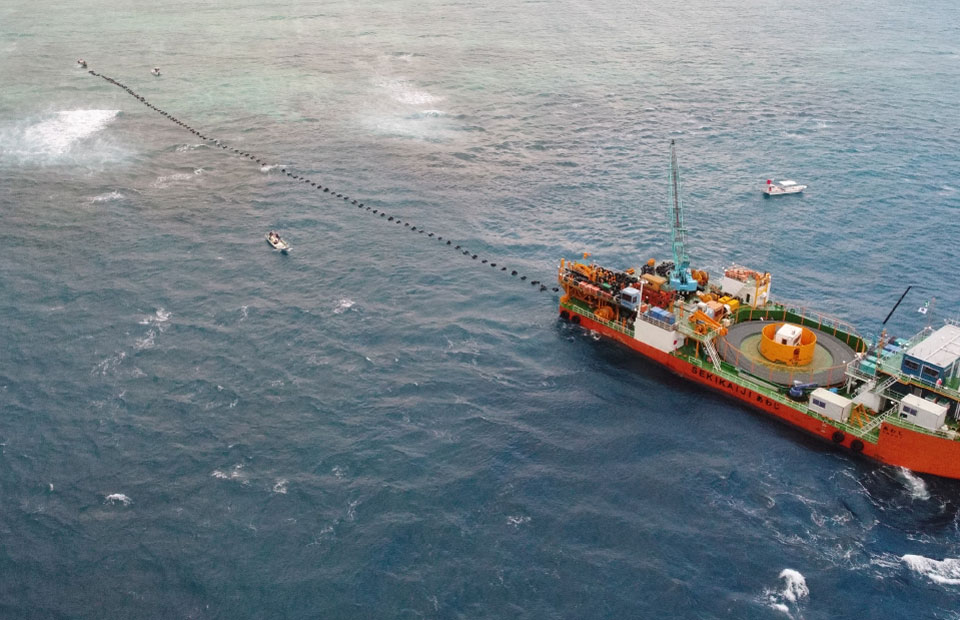
- Burying
-
High-speed, high-quality construction with the ROV in Japan’s largest class for burying
The cables laid on the seabed are buried further below the seabed surface for longevity. There are various methods for burying cables, but we use Japan’s most powerful ROV (underwater robot) for this purpose. To meet the increasing demands for cost reduction and quality improvement, we can bury cables deeper and faster.
Because we use a dedicated DPS work barge as a mothership, we can access from shallow to deep seas, making a wide range of construction areas possible. We can also perform additional burying after construction. Moreover, we own towing-type burying equipment, which makes simultaneous burying possible during laying.
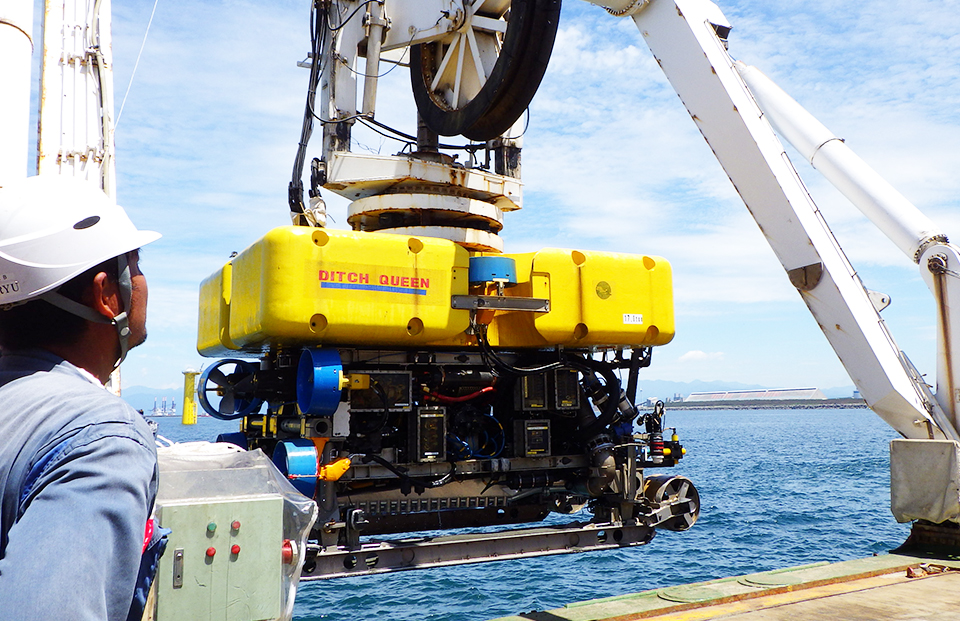
- Protection
-
Applying the know-how gained from submarine cable laying to protection work.
There are a variety of methods for protecting submarine cables. We have experience in almost all of these methods and can meet the diverse needs of our customers.
Achievements: Installation of cast iron protection pipes by divers, installation of cast iron protection pipes during laying, installation of polyurethane resin protection pipes, simultaneous burial/post burial by machinery, manual burial by divers, sheathing protection with rock bags, rock dumping, and protection of cables near wind turbines by the Cable Protection System (CPS)
In addition to the above achievements and know-how, SEKIKAIJI Industry has specialized equipment.
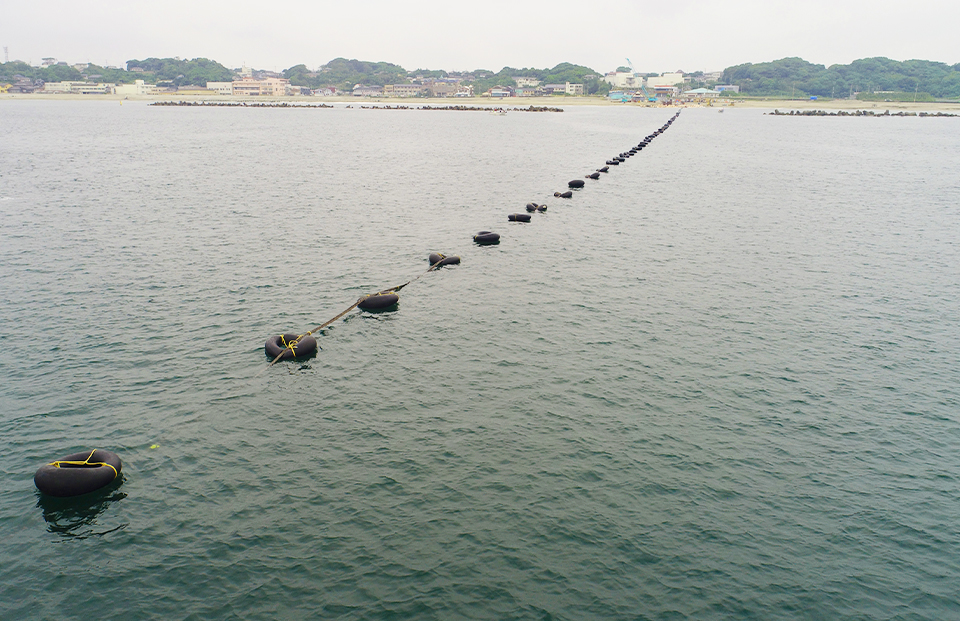
- Survey
-
To locate laid cables
Seabed positioning accuracy has significantly improved with recent technological innovations. However, submarine cables have a service life of several decades, and many cables laid nearly 100 years ago and abandoned remain on the seabed. Surveying the position of old cables is especially essential information when considering new routes, but the accuracy of old navigation instruments is far inferior to today’s. Finding cables on the deep-sea floor with limited information is a challenging task. However, SEKIKAIJI Industry has a track record in various cable survey services, including checking the condition of cable deterioration and inspecting burial depth.
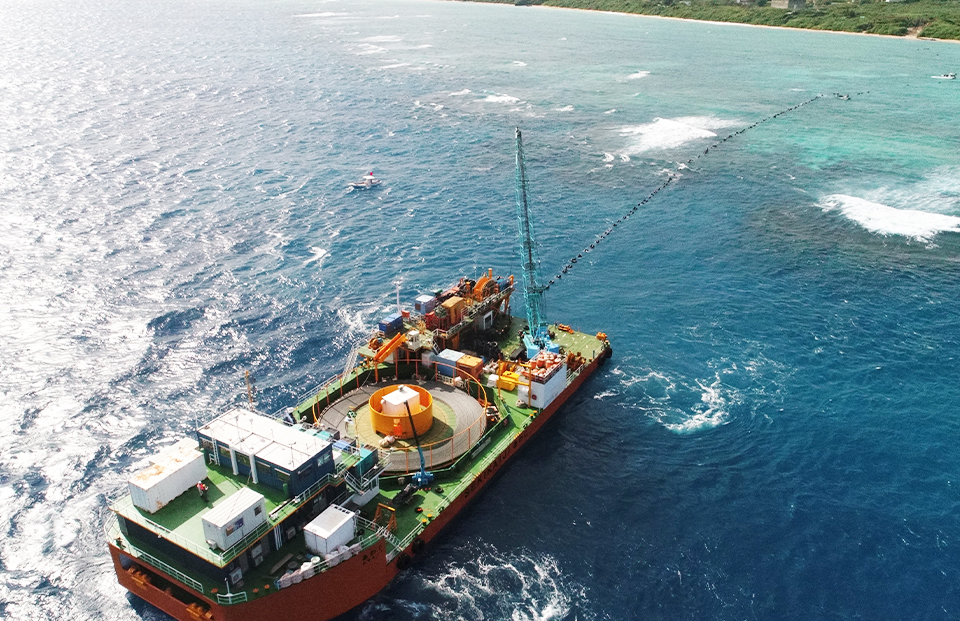
- Others
-
Cable-related work encompasses more than just the above; it is extensive.
In addition to the above, submarine cable operations cover a wide range of activities, including the removal of old cables, relocation for the construction of other structures, and repairs in case of cuts due to aging or external disturbances. Each of these activities differs in content and method from the initial laying of submarine cables. The true condition of a cable is not known until it is retrieved onto the ship. While it is necessary to plan and prepare for all eventualities, unexpected issues frequently arise. These operations fully demonstrate SEKIKAIJI Industry’s on-site response capabilities.
